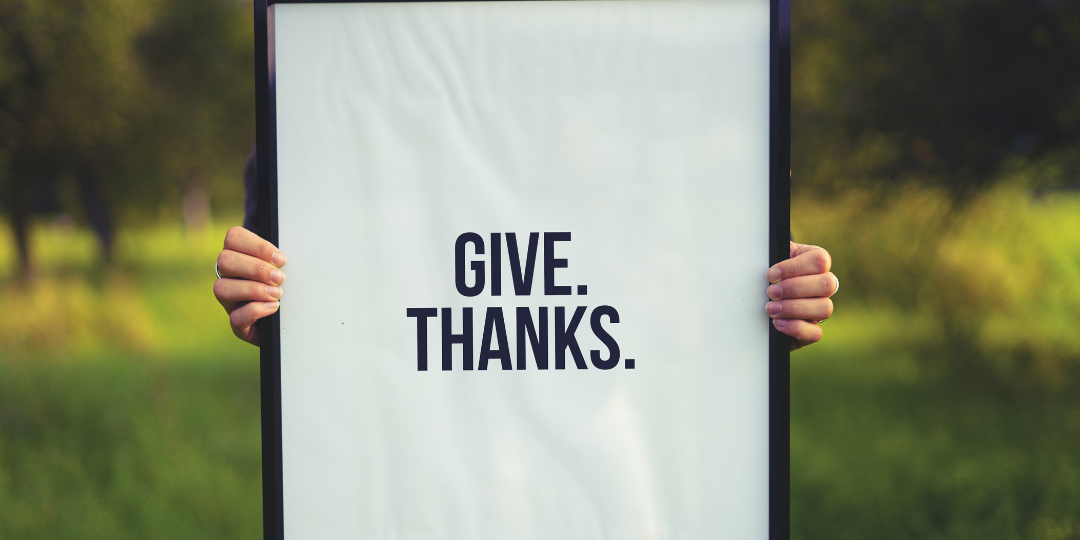The Science of Gratitude
Photo by Simon Maage on Unsplash
Every Thursday, I share one action, habit, or project you may want to undertake in order to improve your health, happiness, and sense of well-being.
If you are finding value in our PROJECT OF THE WEEK Newsletter, we would greatly appreciate it if you would spread the word. Your friends and family can click HERE to sign-up.
PROJECT OF THE WEEK
The Science of Gratitude
Why does practicing gratitude matter?
There is growing scientific evidence that the practice of gratitude is what builds a "happier life". While most achievements and accomplishments may bring short-term improvements to one's mood, these improvements don't last. We quickly return to our "status quo".
Gratitude is one way to build a measurably happier life.
Below are some of the benefits of building a gratitude practice:
Benefits of Gratitude
More satisfaction with life
Builds resilience
Lowers stress
Less likely to experience burnout
Strengthens relationships
Better sleep
Better physical health
What does an effective gratitude practice look like?
Unfortunately, making a list of things you are grateful for does not seem to be that effective.
Your gratitude practice needs to be grounded in recalling a story about an experience you are grateful for, a time you received genuine gratitude from someone else, or a time you observed someone else receiving genuine thanks.
“Enjoy the little things. For one day you may look back and realize they were the big things.”
- Robert Brault
Getting Started
Where do I start?
Your gratitude practice needs to be grounded in a narrative that is meaningful to you.
"My gratitude practice is founded on me receiving genuine thanks."
"My gratitude practice is founded on me observing someone else receiving genuine thanks."
Think about an experience where you received genuine thanks or you observed someone else receiving genuine thanks.
Write down a few bullet points reminding you of your narrative about why gratitude is meaningful to you and how this experience impacted you.
What state of mind were you in before you received the gratitude?
What state of mind were you in after you received the gratitude?
Read what you wrote and spend one to three minutes thinking about it.
It is recommended that you complete this gratitude exercise at least three times a week.
How to make gratitude a habit:
Pick what time of day and days of the week you think will work best for you.
While the science shows that you only need to practice gratitude three days a week, you may have a much easier time being consistent if you do this habit daily or on weekdays.
Is there another current habit that you already perform at the time you picked, that you can stack your gratitude practice on top of?
It could be with your morning coffee, after you brush your teeth in the evening, or right when you get into bed at night.
Think about how you are going to remember to practice gratitude as you start to implement this new habit.
Maybe you want to leave your gratitude journal next to the coffee pot or on your bed?
You may also want to set an alarm as a reminder.
The good news is, if your goal is to practice gratitude daily, and you are successful daily-ish (3 days a week) you should experience the benefits.
Additional Resources
I highly recommend the Podcast episode, “The Science of Gratitude & How to Build a Gratitude Practice” by the Huberman Lab Podcast (Episode 47).
Here is a link if you would prefer to watch it.
Ready to Get Started?
If you feel excited about implementing this strategy and want some additional accountability and support to get started, the It’s All in the Planning Starter Pak was designed for you!
A Note from Happy Spaces
The goal is to add value to your life. If you think this project will add value:
Estimate how long you think it will take. I would recommend doubling the time you estimate.
Look at your calendar over the next week and pick a date and time to get started.
Make an appointment on your calendar for the estimated time.
If you estimate that completing this project will take longer than one hour, I recommend doing it over multiple days. This will support you in getting started!
Prior to starting this project, take a few minutes to make a step-by-step list of EVERY action you need to take to complete this project.
It's not all or nothing. You can choose to implement only the parts of this project that add value to your life.
An Accountability Partner can be a great support in following through on your goals and commitments.
We understand how challenging it can be to implement new habits and systems. For additional support please go to HappySpacesBySarah.com.
Creating a life you don't need a vacation from! ®
Sincerely,
Sarah Weingarten
Meet Sarah
Growing up as the oldest of nine siblings in Upstate New York, I learned to use organization to create sanity among the chaos. Today, I work together with individuals, families, and small businesses to create habits, systems, and spaces that support their needs, goals, and dreams. Clients often refer to our work together as "life-changing" and "better than decades of therapy". What I love most about my work is the lasting impact it has on real people's lives. Nothing makes me happier than hearing the many success stories of clients I have worked with.



